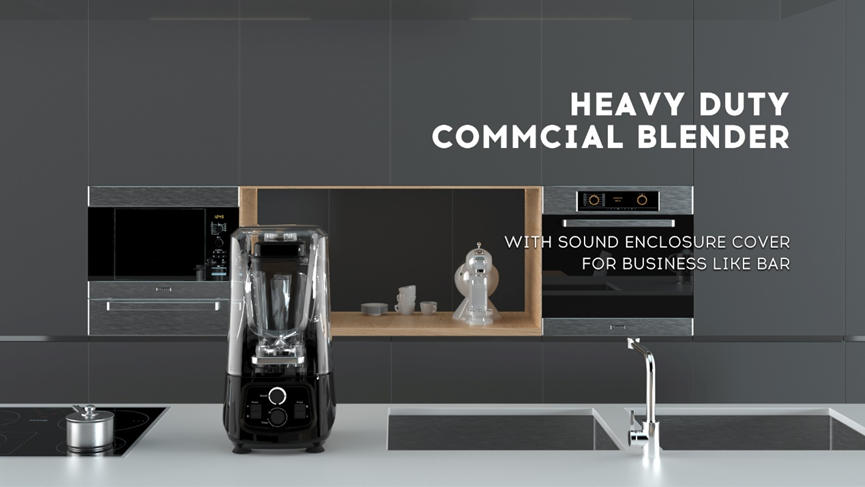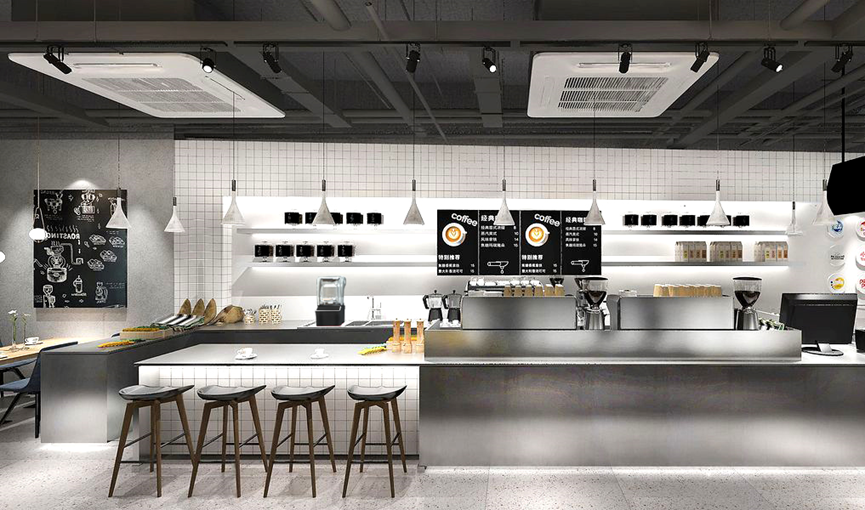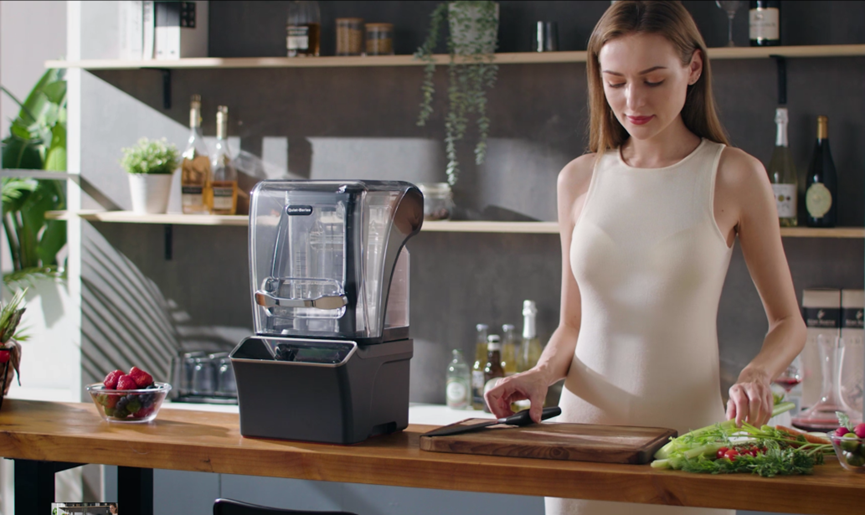Why Every Restaurant Needs a Heavy Duty Commercial Blender
release time:
2025-05-05
Why Every Restaurant Needs a Heavy Duty Commercial Blender
Table of Contents
- Introduction
- The Advantages of Heavy Duty Commercial Blenders
- Versatility in the Kitchen: A Multitasking Marvel
- Boosting Efficiency and Productivity in Restaurants
- Enhancing Your Menu with a Commercial Blender
- Cost-Effectiveness of Heavy Duty Blenders
- Durability and Reliability: Investing for the Long Haul
- Cleaning and Maintenance of Commercial Blenders
- Frequently Asked Questions
- Conclusion
Introduction
In the competitive world of the restaurant industry, every detail counts. One often-overlooked piece of equipment that can make a significant impact on operations and customer satisfaction is the **heavy-duty commercial blender**. This powerful tool not only streamlines food preparation but also enhances the quality of dishes served, making it an indispensable asset for any restaurant. In this article, we will explore the various reasons why every restaurant should invest in a heavy-duty commercial blender and how it can elevate both efficiency and menu offerings.
The Advantages of Heavy Duty Commercial Blenders
Heavy-duty commercial blenders boast a plethora of benefits that cater specifically to the demanding needs of a restaurant environment. These include:
1. High Power and Performance
Unlike home blenders, commercial blenders are designed to handle heavy workloads. With powerful motors capable of producing high RPMs, they can blend, puree, and emulsify ingredients swiftly, ensuring that your kitchen operates smoothly during peak hours.
2. Enhanced Texture and Consistency
A heavy-duty blender can achieve a level of texture and consistency that is crucial for many recipes. From smoothies to sauces, the ability to finely blend ingredients means that dishes are not only visually appealing but also delightful to taste.
Versatility in the Kitchen: A Multitasking Marvel
One of the standout features of a heavy-duty commercial blender is its versatility. Here are several ways it can be utilized:
1. Preparing Soups and Sauces
A commercial blender can make smooth soups and sauces that are essential for many restaurant menus. The ability to blend cooked ingredients directly in the pot eliminates the need for additional equipment and saves time.
2. Crafting Drinks and Smoothies
With the rising popularity of health-conscious choices, offering smoothies and blended beverages can be a lucrative venture. A commercial blender can handle ice and frozen fruits, producing consistent and delicious drinks.
3. Making Dips and Spreads
From hummus to guacamole, a heavy-duty blender can create creamy dips and spreads that enhance your appetizer menu, satisfying diverse customer palates.
Boosting Efficiency and Productivity in Restaurants
In a bustling restaurant environment, time is of the essence. Heavy-duty commercial blenders can significantly boost efficiency and productivity in the following ways:
1. Speeding Up Preparation Time
With a powerful motor and sharp blades, heavy-duty blenders can drastically reduce the time it takes to prepare ingredients, allowing chefs to focus on other tasks and serve customers faster.
2. Reducing Labor Costs
By automating blending tasks, restaurants can reduce the need for manual labor. This not only cuts costs but also minimizes the risk of injury associated with repetitive manual tasks.
3. Streamlining Workflow
A heavy-duty blender can be integrated into the kitchen workflow, allowing for easy access during meal preparation. This streamlining frees up space and enables chefs to work more efficiently.
Enhancing Your Menu with a Commercial Blender
The versatility and efficiency of a heavy-duty commercial blender can lead to exciting menu enhancements:
1. Innovative Recipes
With the ability to create unique textures and flavors, chefs can explore innovative recipes that set their menu apart from competitors.
2. Seasonal Offerings
A commercial blender allows for easy adaptation of seasonal ingredients, enabling restaurants to offer fresh, timely dishes that attract customers looking for new experiences.
3. Healthier Options
Incorporating smoothies, purees, and blended soups into the menu provides healthier options, appealing to health-conscious diners and enhancing the restaurant's reputation.
Cost-Effectiveness of Heavy Duty Blenders
Investing in a heavy-duty commercial blender is not just about immediate benefits; it's also a long-term financial decision. Consider the following:
1. Long-Term Investment
While the initial cost of a high-quality commercial blender may be higher than a standard kitchen appliance, the durability and efficiency make it a worthwhile investment. The potential for increased sales through enhanced menu offerings can quickly offset the initial expense.
2. Reduced Waste
Heavy-duty blenders can create uniform blends, leading to less food waste. By maximizing the use of ingredients, restaurants can save money and operate more sustainably.
3. Increased Customer Satisfaction
When customers enjoy high-quality dishes made possible by a commercial blender, they are more likely to return, boosting overall revenue.
Durability and Reliability: Investing for the Long Haul
In the restaurant industry, equipment must withstand rigorous use. Heavy-duty commercial blenders are built for longevity:
1. Robust Construction
Manufactured with high-quality materials, these blenders can endure daily use without compromising performance, making them ideal for busy kitchens.
2. Warranty and Support
Many reputable brands offer warranties and customer support, providing peace of mind regarding maintenance and repairs, which is crucial for any restaurant operator.
Cleaning and Maintenance of Commercial Blenders
One common concern for any kitchen appliance is the ease of cleaning and maintenance. Fortunately, heavy-duty commercial blenders offer several advantages:
1. Easy to Clean
Most commercial blenders are designed for easy disassembly and cleaning. Many models feature self-cleaning functions, significantly reducing labor time.
2. Maintenance Tips
Regular maintenance, such as checking blades, inspecting seals, and keeping the motor clean, ensures the longevity of the blender. Following the manufacturer’s guidelines helps maintain optimal performance.
Frequently Asked Questions
1. What makes a commercial blender different from a regular blender?
Commercial blenders are designed for high volume and heavy use, featuring more powerful motors, durable materials, and larger capacities compared to standard home blenders.
2. Can a heavy-duty blender handle hot liquids?
Yes, many commercial blenders are designed to handle hot liquids, making them suitable for blending soups and sauces directly in the pot.
3. How much power should a commercial blender have?
A commercial blender should typically have a motor power of at least 1,500 watts to effectively handle tough blending tasks.
4. Are there specific brands recommended for commercial blenders?
Brands such as Vitamix, Blendtec, and Waring are well-known for their durable and high-performing commercial blenders in the restaurant industry.
5. How can I ensure my commercial blender lasts long?
Regular maintenance, proper cleaning, and following operational guidelines help extend the life of your commercial blender.
Conclusion
Investing in a **heavy-duty commercial blender** is a strategic decision that can significantly impact the success of any restaurant. From boosting efficiency and enhancing menu offerings to providing a reliable, durable tool that stands up to daily demands, a commercial blender is more than just an appliance; it's a vital component of a well-run kitchen. By embracing this powerful tool, restaurants can improve their overall operations and deliver exceptional dining experiences that keep customers coming back for more.
More information





